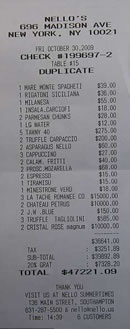 There always seems to be a new startup involving sending money person-to-person, with the most common demo showing how easy it is to split a restaurant bill with your friends. Is this really a huge problem? Are there many groups of friends where one person orders lobster and four drinks without offering to pay their fair share? Yes it can get weird once in a while, but I would think things would self-regulate quickly. (Okay, maybe not the $47,000 food bill for 6 people on the right!) Also, it’s not very hard to ask for split checks with modern POS cash registers… maybe just tip a bit more for the inconvenience.
There always seems to be a new startup involving sending money person-to-person, with the most common demo showing how easy it is to split a restaurant bill with your friends. Is this really a huge problem? Are there many groups of friends where one person orders lobster and four drinks without offering to pay their fair share? Yes it can get weird once in a while, but I would think things would self-regulate quickly. (Okay, maybe not the $47,000 food bill for 6 people on the right!) Also, it’s not very hard to ask for split checks with modern POS cash registers… maybe just tip a bit more for the inconvenience.
The economic argument is that if you know you’ll be splitting the bill evenly, you are incentivized to order more. In a group of six, ordering a $6 cocktail only costs you $1 more. A $12 appetizer is only $2. But you’re also subsidizing other people, so social dynamics come into play. If someone believes others are “freeriding” on them, then they’re more likely to order more, and so on. Do people really spend more when splitting the bill?
According to a study pointed out by Undercover Economist Tim Harford, people just might:
Diners were, at random, offered three different billing rules: split-the-bill, pay-your-share, or on-the-house. They were also asked to order food by writing their choices down, without discussion. This odd request was made less odd by the fact that they were all filling in questionnaires at the time.
Homo economicus immediately emerged: diners ordered, on average, 37 shekels worth of food when paying their own way, 51 shekels when splitting the bill, and 82 shekels when the experimenter picked up the tab for everyone. (A small follow-up experiment hinted that people splitting the bill six ways behave similarly to those paying one-sixth of their own bill.)
The study involved bringing strangers together in an actual restaurant ordering real food, so it’s close but not quite the same as eating with friends. Even with friends, I still tend to think as a group the total bill would be a bit higher, like maybe one more person will order a beer if everyone else is having one.
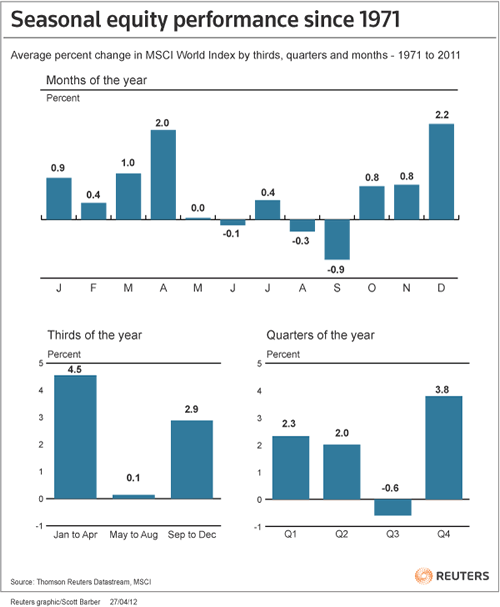
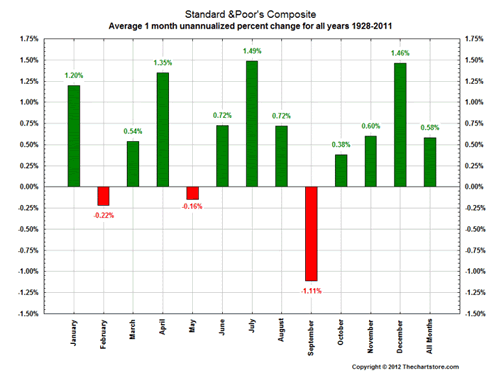
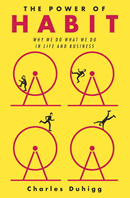
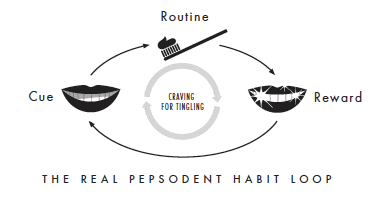
 Recently, I came across an investment tip called the Overnight Rule from Carl Richards via the
Recently, I came across an investment tip called the Overnight Rule from Carl Richards via the 
 I’m currently reading the book
I’m currently reading the book 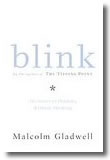
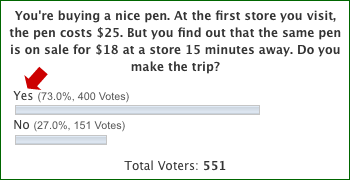
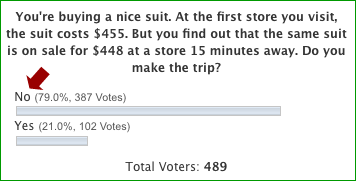


 Here’s another poll to test your frugality behaviors and decision-making processes. There is no right or wrong answer, I promise. Just answer the poll honestly before reading further. It’ll just take a second.
Here’s another poll to test your frugality behaviors and decision-making processes. There is no right or wrong answer, I promise. Just answer the poll honestly before reading further. It’ll just take a second.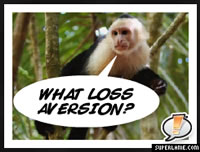 After two days of polling for my
After two days of polling for my 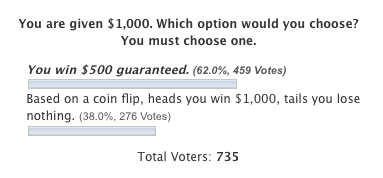
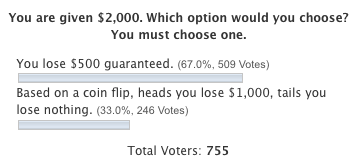
 The Best Credit Card Bonus Offers – 2025
The Best Credit Card Bonus Offers – 2025 Big List of Free Stocks from Brokerage Apps
Big List of Free Stocks from Brokerage Apps Best Interest Rates on Cash - 2025
Best Interest Rates on Cash - 2025 Free Credit Scores x 3 + Free Credit Monitoring
Free Credit Scores x 3 + Free Credit Monitoring Best No Fee 0% APR Balance Transfer Offers
Best No Fee 0% APR Balance Transfer Offers Little-Known Cellular Data Plans That Can Save Big Money
Little-Known Cellular Data Plans That Can Save Big Money How To Haggle Your Cable or Direct TV Bill
How To Haggle Your Cable or Direct TV Bill Big List of Free Consumer Data Reports (Credit, Rent, Work)
Big List of Free Consumer Data Reports (Credit, Rent, Work)